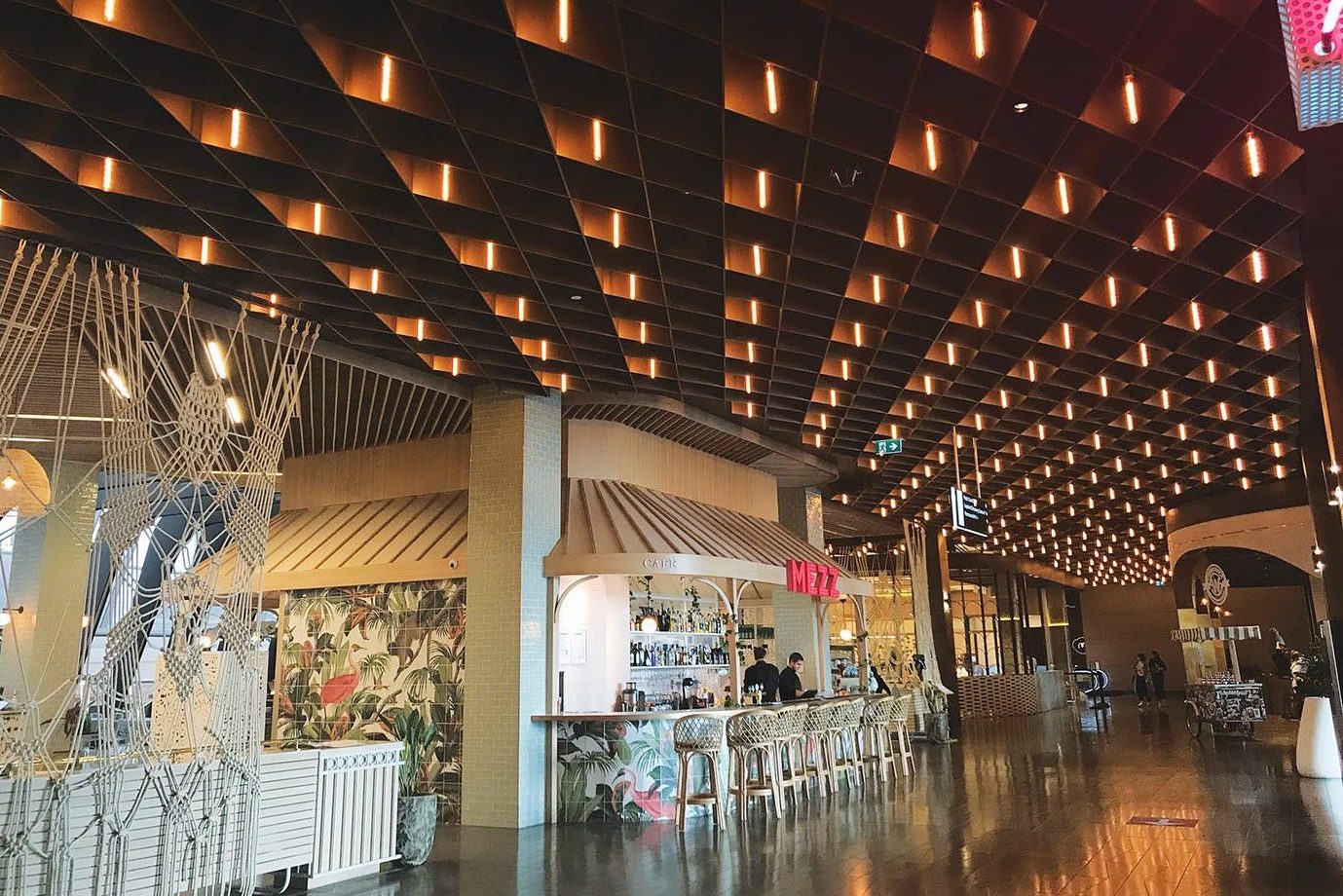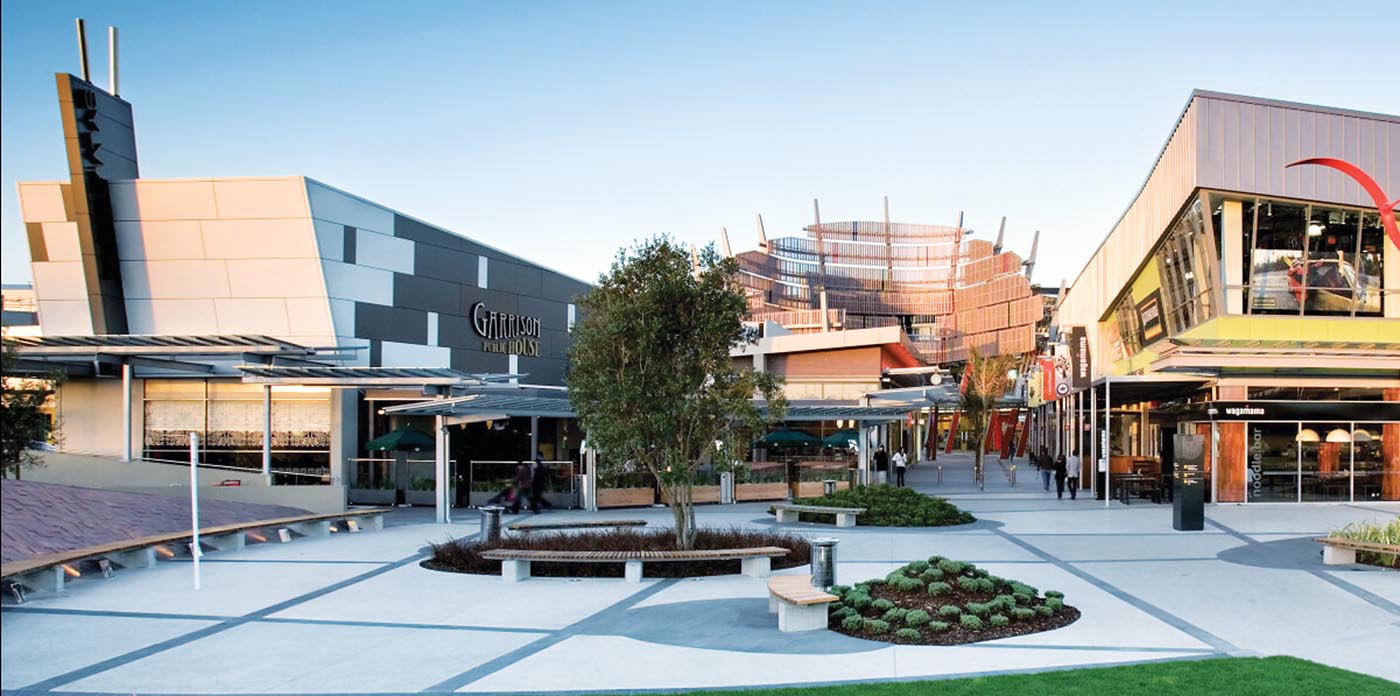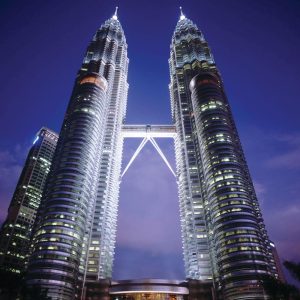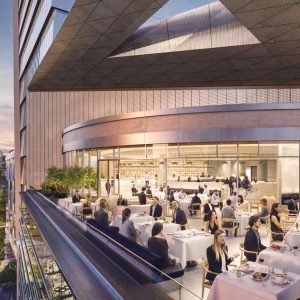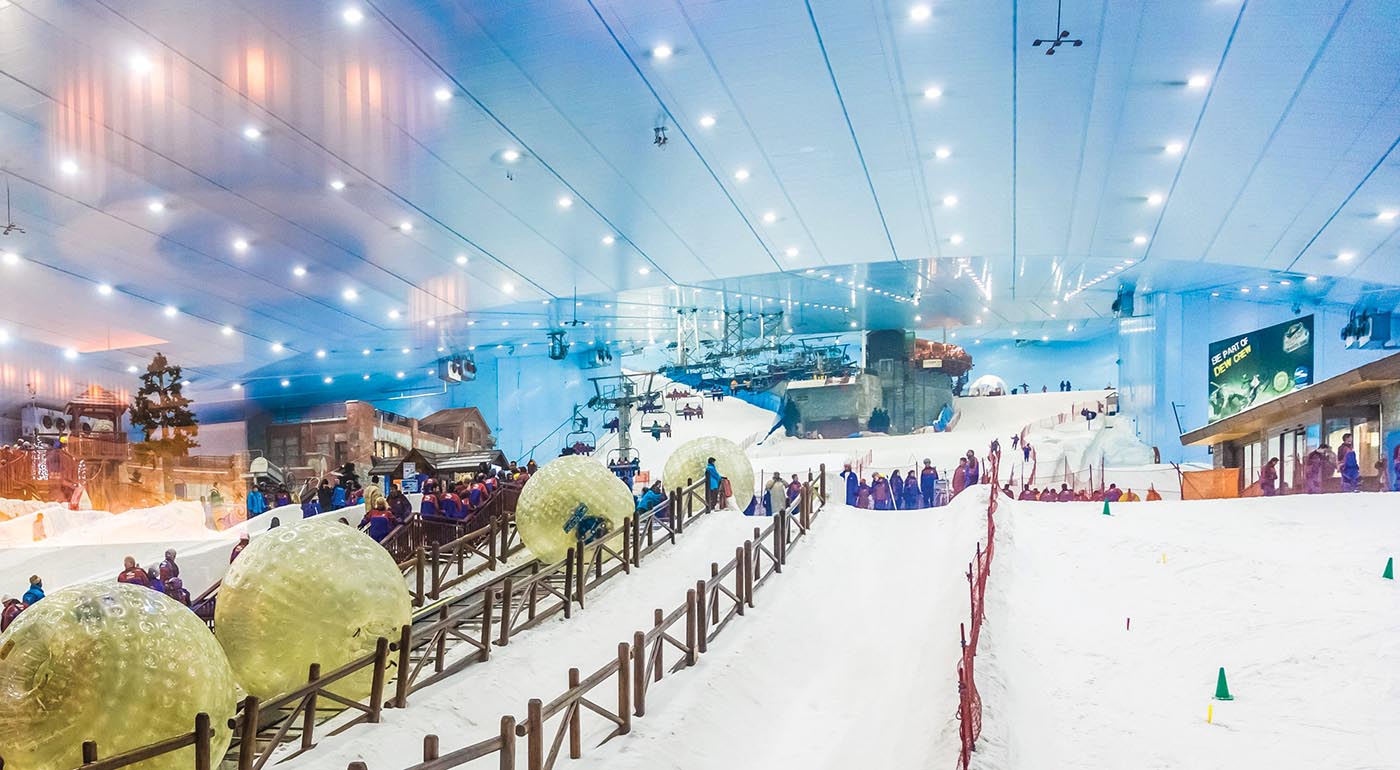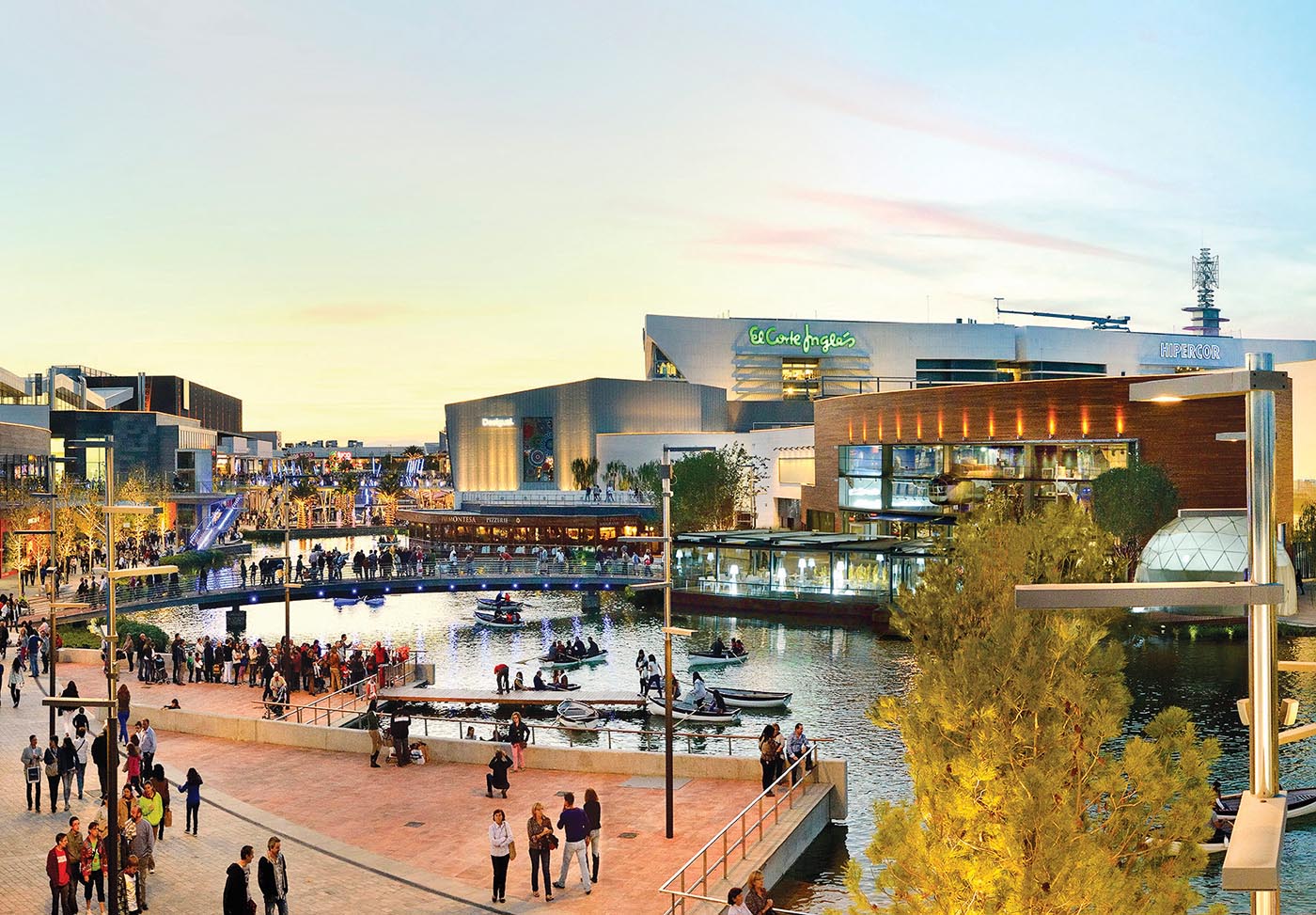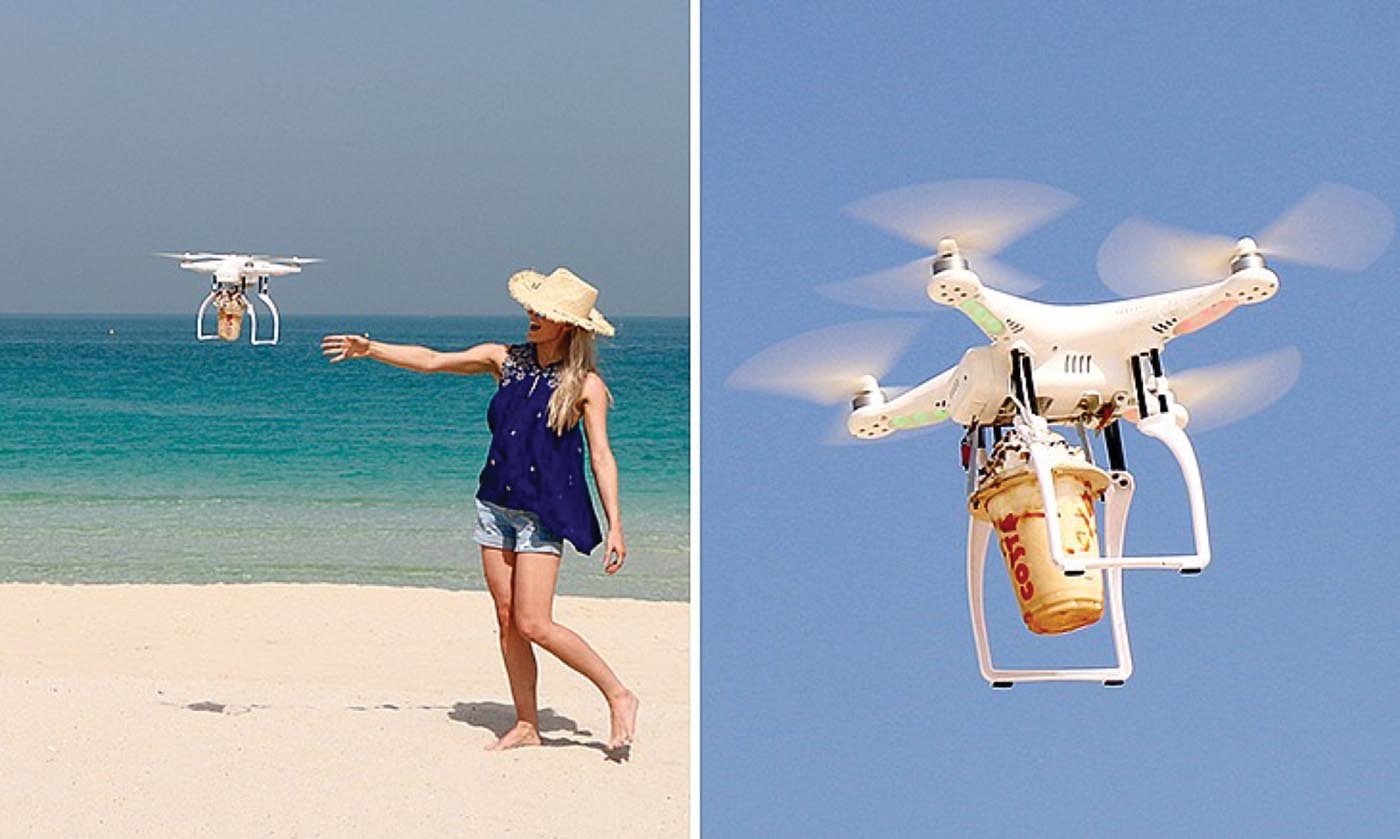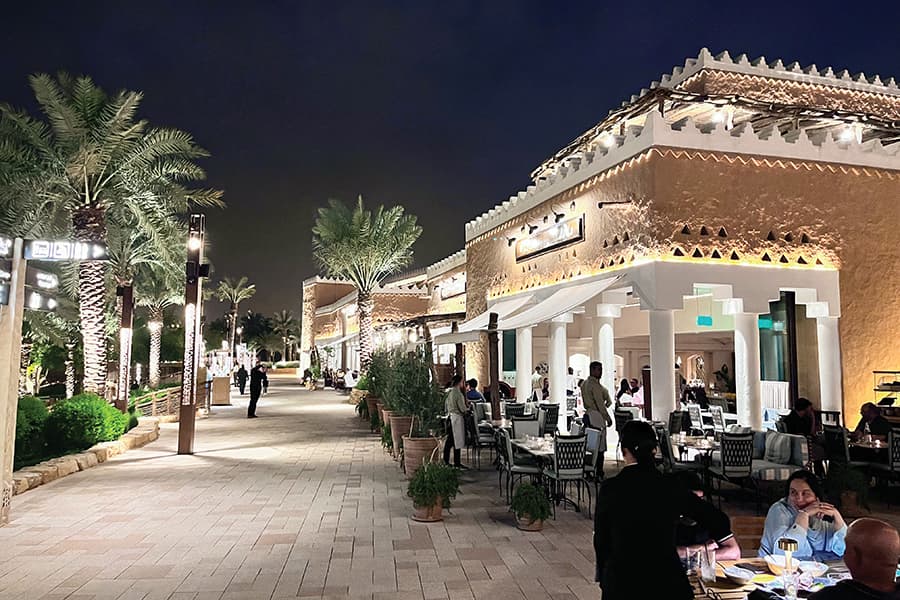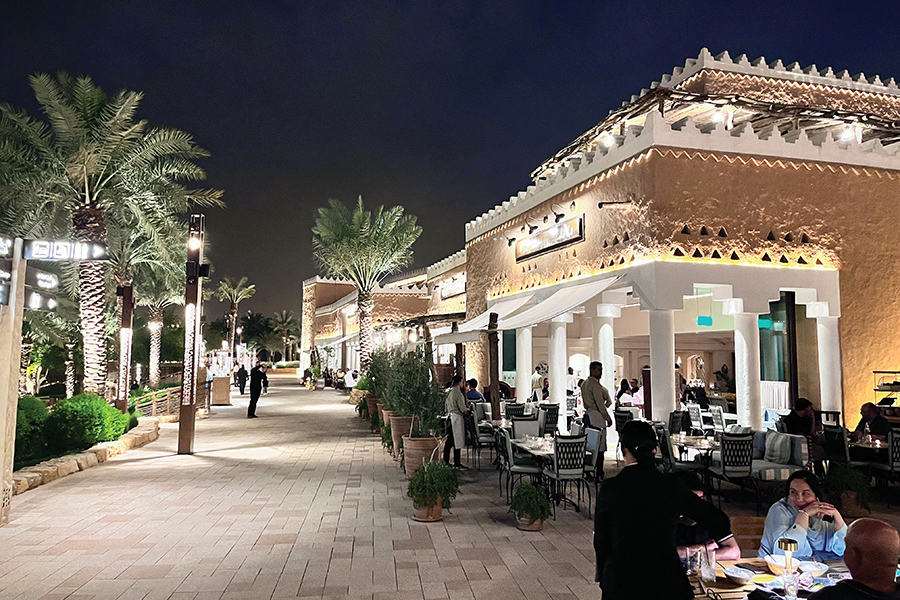Francis Loughran thinks that shopping centres are all about food. He sees retail as secondary, and believes that people come to centres just to eat and drink! That’s because he’s passionate about what he does. Ten years ago, this belief would have been laughed at. Today it might just be a faint smile. Tomorrow it could well be a frown masking the thought: “Is he right?”
Looking back at the year that was, there are many factors that have shaped, and will continue to shape, the future direction of food and hospitality (F&H) in our shopping centres, large and not so large retail centres, mixed-use developments, airports and other user-centred precincts. It is clear that shopping centre developers globally are no longer treating food services as an add-on to their centre’s retail offer with the ‘food catering’ sector of the retail industry experiencing unprecedented growth in the past 10 years. With this F&H growth, transformation has occurred and the historical F&H planning process is no longer viable with today’s ‘Gourmet Democratisation’ being about much more than a leasing plan.
The mall of the future will focus on its food and beverage advantage. This is all part of that Gourmet Democratisation, which has seen many luxury food concepts, brands and cuisines become more attainable to the mass market.
This has been driven by the increased value that the modern dining populations (Generations X, Y and now Z) place on eating (avoiding at all times any reference to ‘avocado-on-toast-eating Millennials’) and dining in the extensive range of cafes, pop-ups, food trucks, restaurants, food halls, cocktail bars and the many versions of each which continue to flourish in cities and towns across the globe. On a recent trip to London, I tried securing a table for two at 6pm on a Monday at one of my favorite local Indian restaurants in London’s East, Dishoom. Not a chance; the queue was 25 deep and no reservations.
- V&A Waterfront, Cape Town
- Westfield London
Food precincts that achieve ‘dining destination’ status have almost always been developed by experienced F&H masterplanners. Westfield Bondi Junction, Westfield Sydney, The Emporium Melbourne, Chadstone, Barkly Square, Collins Place, Collins Square, The Galleria Abu Dhabi, Malls of the Emirates, Dubai Mall, South Melbourne Market, Westfield Doncaster, Woodgrove Melbourne, Liffey Valley Dublin, Pacific Place Hong Kong, KLCC Kuala Lumpur, Pacific Fair Gold Coast, Hudson Yards New York, Westfield London, Brisbane Airport, Auckland Airport, Sylvia Park Auckland, V&A Waterfront Cape Town, the list goes on…
The time has come that the world’s top mall developers are throwing their weight behind the importance of F&H as a major growth category whereby they can create clearly defined, relevant, beautiful, sustainable ‘experiences’. Malls are now trying to lure customers with wonderment – experiences and dining – that can’t be found online. Today’s customer is experience hungry, and food and beverage is the key to differentiate by experience.
Technology can’t, and will never provide the same attention as a good shop assistant or waiter.
“The reason that shoppers continue to shop in a physical store is due to the experience; something irreplaceable by e-commerce.”*
Never before have developers placed so much emphasis on their centre’s F&H strategy, developing a masterplan that not only focuses on adding more food, but critically assesses the volume of food, its sustainability, mix programming, market relevance, critical-mass capability, placemaking attributes, and for the first time for many, onboarding in-house management who will realise its success and asset growth – hopefully experienced F&B professionals with energy, gusto and an on-trend approach.
- KLCC, Kuala Lumpur
- Culinary artistry Hudson Yards, New York
- Mall of the Emirates: where customers can eat, dine, drink, see a movie, ski or get pampered, all before they have even thought about shopping
Everyone today is a foodie, but few really understand how to maximise the business of food. Food for profit is a skill best left to those that have studied the principles that make a project outstanding from a multi-dimensional viewpoint – including the key metrics of sales, asset value, MAT, uniqueness, community connection, memorable experiences, gold-standard management (clean, easily understood, evolving menus; comfortable; capable staff; consistency; longevity; etc).
Food precincts that achieve ‘dining destination’ status have almost always been developed by experienced F&H masterplanners and the F&H strategy includes factors such as positioning statement, programming, sustainable volumes and a proactive and creative F&H marketing strategy to enable it to be a success.
“The trend in food consumption outside the home is particularly evident amongst the Millennial generation who enjoys spending money on experiences rather than enhancing their lives. A recent study by the New York-based market research firm YPulse, for instance, found that 61% of Millennials aged 21 to 24 would rather have dinner at a new restaurant than buy a new pair of shoes. But it is not just the Millennial cohort; consumers across the generations are realising that experiences make you happier and are equally as valuable as buying ‘things’. This is leading to, among other things, an inexorable growth in demand for experiential and destination retailing and eating. Places need to be destinations in their own right and offer an experience beyond pure retailing to compete for the consumer’s precious time… Spend is shifting from transactional to experiential food offers.”**
Future Food is working in partnership with several shopping mall developers across several continents to maximise their asset’s F&H potential and secure their relevancy in today’s competitive retail environment. The exciting projects at hand involve creating a retail-resort dining destination, planning gourmet towers (stacking restaurants 7+ storeys high), developing local product cafes, food laneways and renowned cafe courts, strategising modern ‘brand-driven’ food halls and developing a ‘chef-only’ dining terrace, to name a few.
Despite the variance in the executed F&H product, all of these projects have one thing in common – they want to deliver a competitive edge for their centres by creating an experience. When it comes to the mall of the future, retail is no longer the centre of the universe.
The mall of the future will also be a food and beverage destination. The British Council of Shopping Centres, now known as REVO, has identified food and hospitality as the one retail category that offers a mall a genuine and sustainable point of difference.
Take the Hudson Yards project in New York which proudly claims, “We’ve raised expectations”. Thomas Keller will curate the restaurant collection at Hudson Yards, showcasing a variety of 25 dining and casual eating options from a selection of the world’s best chefs and restaurateurs.
Chefs José Andrés, David Chang, Michael Lomonaco, and Costas Spiliadis will operate beside Dean & DeLuca, London and Santa Cruz Co.
In addition to a centre’s location and anchors, key planning considerations such as ‘retail shop’ closing times, lifestyle ‘relevance’, core demographic mix, climate, F&H clustering, placemaking, cultural sensitivities, local community, food delivery services, etc are playing a much greater role in creating independent F&H precincts aimed at complementing the shopping centre’s anchors, or in many cases around the world, replacing them.
“The definition of an anchor has changed. Cheesecake Factory does as much business as Sears used to do.”***
Online shopping may be seen by some as the unstoppable juggernaut, but these tactics do seem to be having an effect at slowing things down a little in more retail-focused categories. However, this is not the case when it comes to eating and drinking. Developers globally are undertaking research and are appointing The Business team to find ways to build the best possible case for F&H. This translates to a new culture of how shopping centre developers around the world are using food and hospitality to remain relevant.
Food & hospitality are entertainment – we’re all social animals and yearn to connect. Interaction and engagement are essential for professional, welcoming and luxury experiences.
- intu Retail Resorts, Spain
In today’s retail landscape, economics are measured as one key element of success, but there are several other success factors that are important, including placemaking – the art and science of making great places and compelling customer experiences. The skilled masterplanner is aware of what makes F&H successful. A customer-centric focus is central to a mall’s success and longevity and one which totally examines the following factors which drive ‘relevance’ with renewed reference to:
• Who Are My Customers?: It is a fact that 73% of shoppers regard shopping as a leisure activity with friends and family;
• The Mall Of The Future: Will focus on its F&H advantage;
• The Mall Advantage: Just as television never killed cinemas, nor will online shopping kill malls. Mall developers will ramp up the physical buying experience by focusing on food;
• Expanding Experiences: Westfield employs hotel-trained F&B managers to elevate the retail food experience, and deliver exceptional ‘hospitality’ experiences in their malls;
• Exceptional Positioning: Creating extraordinary places, connecting expanding experiences;
• Economics: No other retail category has generated as much aggressive growth in the past five years as food-related retail has;
- Costa coffee drone delivery
• Technology: Plays a central role in malls remaining relevant. Physical mall developers must keep pace with the changing demands of the consumer who is seeking experiences.
While we all understand ‘retail’, we must ask the question – do we understand retail food?
Allow me to explain my view of this business opportunity: it is all about connecting and remaining relevant. In simple terms, the food and hospitality offer must be strategically masterplanned to ensure it is looking after people and their needs for food and hospitality, giving them a place to visit, feel good, meet friends and family, spend money, make memories, do business and then… to do it all over again. Whether we like it or not, retail is now in the hospitality business. Moreover, it is food and hospitality that will keep retail centres around the globe relevant.
* Tan Kee Yong, MD, Asia Malls Management. ** The Successful Integration of Food & Beverage within Retail Real Estate, ICSC, JLL, 2017.
*** Stephen Lebovitz, CEO, CBL & Associates Properties.


